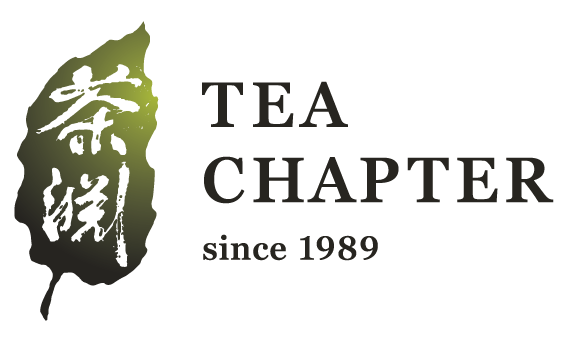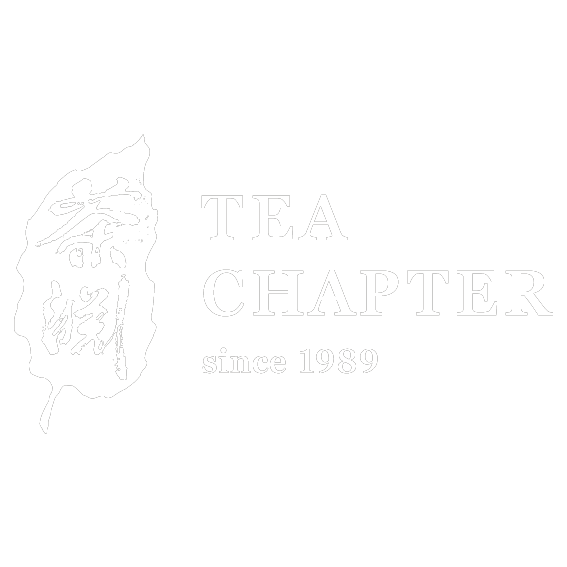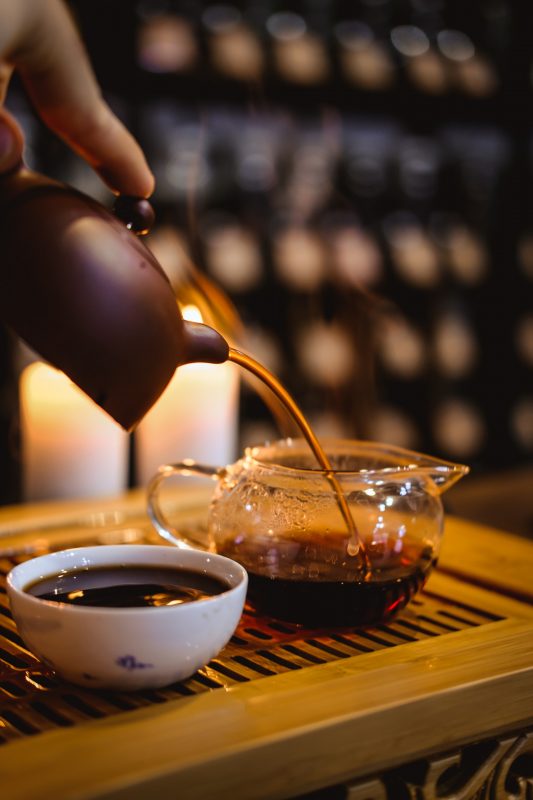Tea Facts
What affects a good cup of tea 什么影响一杯好茶
From fresh tea leaves to a good cuppa, there are many variables in between, from tea tree varieties, tea-growing environment, tea processing to tea storage and brewing, and finally forms the cup of tea that you drink. This article will not elaborate on the formation of the unique flavour of each tea. The main list listed is the influence of the water, temperature, and tools used in the process of transforming from tea leaves to a good cup of tea.
Tea:
This is the most basic requirement, good quality tea. No matter what kind of tea, according to the various factors of the origin of the raw materials, there are differences in quality starting from dry tea.
For example, white tea, the superior grade white tea has a lot of pekoes, the leaves are flat and long, and contains no old stems. The leaves of ordinary quality white tea have no pekoes, leaves are wrinkled, and contains mostly of old stems and red leaves. The quality of white tea is due to the pekoes which are high in amino acid and catechin content, forming the fresh and sweet foundation of a good cup of white tea.
For loose tea, observing the conditions, colour and clarity of the tea leaves through the appearance can preliminarily judge the quality of the tea. At the same time, tasting the tea itself is also an indispensable step to judge the quality of the tea. Some defects can only be known by drinking; such as over-roasting of the tea leaves. For example, withering in rainy weather, insufficient water leads to the green smell of white tea. Tea polyphenols, main astringency, caffeine, bitterness, theanine, sweetness for important characteristics of tea. So why is pure hand-made tea is more expensive than machine-made tea? This is based on the fact that traditional craftsmanship controls every process well. The higher theanine content, that is, the higher the sweetness and freshness, the lower the bitterness resulting in a smooth cup of tea.
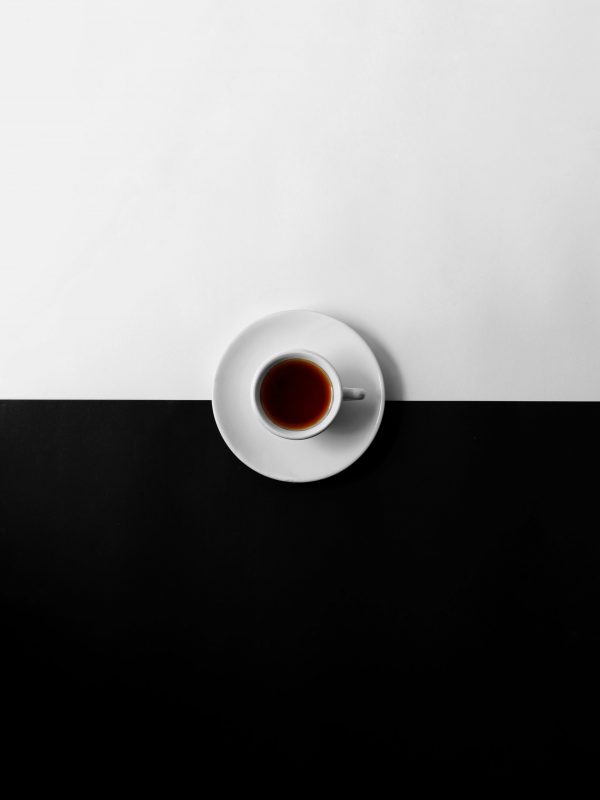
Brewing time:
Different types of tea have different tenderness, different degree of shaping, and characteristics. All these factors leads to the various required brewing times for the tea. You can first summarize the several forms of tea. The spherical oolong tea (heavy shaping) brews slower than the flat green tea, as the leaves of the spherical oolong tea needs to unfold in the pot. Even for the same tea, the amount of tea put in determines the time for making tea as the amount of water in a pot of tea is fixed by the size of the pot. Only by controlling the proportion of the tea, can the tea soup not cover up other flavours due to the excessive bitterness and astringency.
Water temperature:
Ancient Chinese writings have studied the influence of water with different water temperatures on tea. For example, the “undercooked water, Overcooked water, Hou Tang[optimum temperature water]” was mentioned in the “Tea Records” of the Song Dynasty. “Undercooked water” means that the water temperature is too low, even if the inner substance of green tea is not easy to brew. Overcooked water is boiling water, and when used for inappropriate tea leaves, excessive tea tannins and caffeine will be released, resulting in a strong and bitter tea taste. “Hou Tang [optimum temperature water]” means that the water just reaches a small boil, between 80-95 degrees Celsius. Most teas can be brewed in this temperature while fine-tuning the temperature further according to the characteristics of the tea.
The water temperature of brewing tea is positively correlated with the release of soluble substances in the tea. The higher the water temperature, the more substances are released, the thicker the tea soup. Generally, the leaching amount at 60 degrees Celsius water is only equivalent to 45-65% of the leaching amount of tea brewed with boiling water. Unoxidised or lightly oxidised tea leaves are tender and strong, so they are generally not suitable for brewing with high-temperature water. As for heavily oxidised tea, or aged tea, the tea is mild and thick, and would need high-temperature stimulation to better release the tea flavour. For teas harvested in the wild, they generically have broad buds and leaves, high resistance to soaking, and a mellow and fragrant taste. Therefore, boiling water is needed to stimulate its special tea fragrance. Chinese Black tea leaves are extremely rich in internal quality and the production process is complicated and takes a long time. If the temperature of the water is too low, there is no way to stimulate the tea to produce its rich and mellow taste. Wuyi Rock Tea is a heavily oxidised tea with rich flavour and rocky charm. If the temperature of the water is not high enough, it will not be able to stimulate the flavour and richness of Rock tea. The water temperature of green tea is generally controlled at 80 degrees Celsius. If the temperature of the water is too high, it will cause a large amount of tea polyphenols to be leached, and the tea would become too bitter. It will also destroy the vitamin C, chlorophyll and green tea in the tea. Green tea should taste refreshing, fresh and tender, and if brewed with water that the over the required temperature, the bitterness and astringency will mask these characteristics.
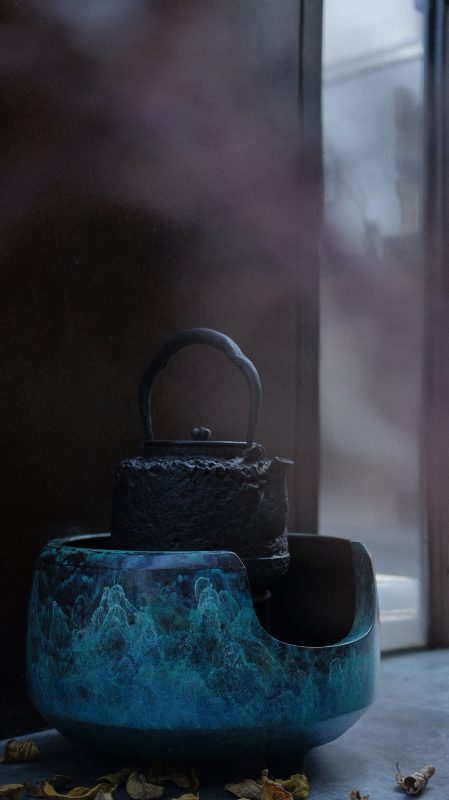
Water quality:
The influence of water on tea is not as great and obvious as the previous conditions, and for most, the water that is available and meets safety standards would be sufficient. However, for those who are very particular about tea, water is also a very important variant. If the quality of water is exceptional, it will elevate the taste of your cup of tea to the next level.
The types of modern water are divided into eight categories: urban tap water, purified water, distilled water, mineral water, natural spring water, natural mineral water (TK), soda water, and aerated mineral water. In the doctoral dissertation “The Effect of Water Quality on the Flavour Quality of Dragon Well Tea and Its Mechanism”, the study shows that distilled water, purified water, natural drinking spring water and other water samples with lower total ion content taste better. The ions in the water have a great influence on the extraction of tea polyphenols, catechins and amino acids.
Technique:
Making tea is not only the process of drinking a cup of tea, the tea artist also beautifies the process of making tea. If a good cup of tea is equipped with suitable brewing techniques, it will also make the tea taste better. The technique is inseparable from the influence of water and temperature on tea mentioned before. If the previous factors are all directly influencing factors, the technique is to indirectly achieve the goal of a good cup of tea with the brewer controlling the water, temperature and matching teaware. It is said that green tea is the most tender, so with the aid of the alternative brewing method, first pour hot water and then add tea to reduce the contact time between hot water and tea and prevent excessive release of tea substances from the force of pouring water. For example, some teas need high temperature, such as Wuyi rock teas. In order to maintain the high-temperature requirement of the tea, cover the tea lid with the hot water and then pour the pot to reduce the temperature difference between the inside and the outside of the pot, which helps to stimulate the high temperature that is needed. While the tea is brewing, the time is controlled as well. With the perfect control, the optimal tea aroma would be induced and the amount of polyphenolic alkaloids will remain balanced. The cup of rock tea would be full of flavour, not astringent, not bitter, and smooth.
Teawares:
Commonly used tea wares include purple clay, glass, porcelain teapots and cups. As for kettles, it includes iron, clay, silver, glass kettles and so on. The former has a direct impact on tea, and the latter has an impact on water quality. The good thing about glass would be its transparency. The transparency allows for the appreciation of the shape and colour of the tea and the tea leaves. Especially true for green tea which contains a beautiful bright green hue. During the brew, you can observe the “dance of the tea leaves” as the leaves slowly stretch and unfold, much like new leaves growing on branches of the tea tree. White porcelain and some ceramic products, have pure colours, high density, and it is not easy to leave the smell of tea in the vessel or change the quality of tea. Making Porcelain one of the most neutral vessel for brewing tea.
Integrating artistry and practicality, the purple clay teapot was specially introduced in the Ming Dynasty of China for making tea. It also helped the simplification of Chinese tea culture, while carrying the essence of tea and ancient literati. Due to the special pore structure of the purple clay, it can make the tea ‘breathe’ in the pot. Wen Zhenheng’s “Changwuzhi” mentioned: “Top quality teapots are made of purple clay. The lid does not steal the fragrance, nor does it have the sour smell of over brewed tea.” It is also because of the stomata that purple sand is more suitable for long-term brewing of one particular kind of tea.
从鲜茶叶到入口一口好茶汤,中间的可变因素非常多,从茶树品种,茶叶生长环境,茶叶加工再到茶叶存储,冲泡,最后变成你口里的那份味道。这篇文章不会细讲每种茶独特风味的形成,所列出来的主要是从干茶变茶汤的过程中,所用到的水,温度,工具等对茶的影响。
茶叶:
这是最基本的要求,品质好的茶。不管什么种类的茶,根据原料产地各个因素,从干茶开始就有品质的分别。
比如白茶,特级白茶芽毫肥多,叶态平伏伸展,无老梗。而普通品质白茶叶片无毫有折皱有老梗,泛红叶。因为毫的氨基酸儿茶素含量非常高,对于白茶的茶汤,鲜爽带甜的滋味特点很大程度是毫的贡献,所以茶叶品质好,奠定了一杯好茶汤的基础。
对于散茶,通过外形观察茶叶的条索完整度,色泽,净度可以初步判断茶的品质.同时品味茶汤也是判断茶品质不可缺的步骤,有些品质要靠喝才能知道,比如烘焙过度导致的乌龙茶的老火味。比如阴雨天气萎凋水分不充足导致白茶的青臭味。茶多酚,主涩,咖啡碱,主苦,茶氨酸,主甜。为什么纯手工制的茶比机器做的贵,这是基于传统工艺对于每一道工序把控的都很到位,茶氨酸含量高,也就是甜度、鲜爽度高,那么苦涩度越低,顺滑度就高了。

出汤时间:
不同的茶原料嫩度不同、揉捻程度不同、茶类特性不同,茶的物质浸出到水中的速度有很大差异。可以先总结茶叶的几种形态,球状乌龙茶(重揉捻)相比扁平的绿茶出味速度要慢,因为球状乌龙茶的叶子在壶中还有展开的过程。即使相同的茶,投放茶量的多少也决定了泡茶的时间。一壶茶的水量是固定的,只有把茶浸出物的比例控制好,茶汤才不会因为过重的苦涩味把其他滋味掩盖掉。
水温度:
中国古代著作中就有研究过不同水温的水对茶的影响,比如宋代《茶录》中提到“未熟汤,过熟汤,侯汤”的说法。‘未熟汤’是指水温过低,即使是绿茶内质也不容易泡出。过熟汤就是沸水,用于不合适的茶叶,会使茶丹宁和咖啡碱释放过量导致茶味浓烈苦涩。‘侯汤’指的是水刚小沸腾,在80-95之间。可冲泡大部分的茶,根据茶的特质细调。
泡茶水温与茶叶中有效物质在水中的溶解度呈正相关,水温愈高,溶解度愈大,茶汤就愈浓,一般60C水的浸出量只相当于100C沸水浸出量的45—65%。未发酵或轻发酵的茶叶,茶叶娇嫩,茶性较烈,一般不宜用高温水冲泡。发酵类的茶叶,茶叶偏老,茶性温和,陈厚,反倒需要高温刺激才能较好的释放茶味。一般而言,野生茶,多为芽叶粗广,耐泡度高,滋味醇厚芬芳,所以需要用沸水才能激发出它的特殊茶香. 黑茶茶叶内质极为丰富,制作工艺复杂时间长,如果水温过低,没有办法刺激茶性,泡出浓醇厚正的口感。还有颇具代表性的武夷茶,武夷岩茶是重发酵茶,味道层次丰富有岩韵,如果水的温度不够高,根本无法和紫砂一起做出焖的效果去激发出武夷茶的韵味及丰富的层次感。绿茶一般水温控制在80C,过高的水温会造成茶多酚大量浸出,茶汤很快变得苦涩,过高的水温还会破坏茶中的维生素C,叶绿素,绿茶这些营养物质含量最高,但会被破坏。绿茶味道清爽,鲜嫰,过浓的苦涩味会掩盖这些特质。

水质:
水对茶汤的影响不如前面几个条件那么大和明显,大部分人用符合饮用标准的水就可以了。当然,对于爱茶之人,水也是很讲究的,用的对用的好,对心爱的一包茶如虎添翼,好上加好。
现代水的种类分城市自来水,纯净水,蒸馏水,矿物质水,天然泉水,天然矿泉水(TK),苏打水,含气矿泉水等八大类。博士论文《水质对龙井茶风味品质的影响及其机制》表明,蒸馏水,纯净水,天然饮用泉水等总离子含量较低的水样口感较好。水中离子对茶叶茶多酚,儿茶素,氨基酸浸出有较大影响。
手法:
泡茶不仅仅是喝一杯茶的过程,茶艺师在泡茶过程中也是极具美感,一杯好茶如果配有适合的冲泡手法,也会使茶汤更出色。手法离不开之前所说水和温度对茶的影响,如果说之前的都是直接影响因素,手法则是通过控制水,温度,搭配工具,间接的达到一杯好茶的目的。都说绿茶最嫩,因此有了上投法的辅助,先倒热水再投茶,减少热水与茶的接触时间以及防止冲力之下过快释放茶物质。比如淋壶,有些茶需要高温,如武夷茶,壶内高温壶外冷会使温度流失过快,为了持续高温,冲完热水盖上茶盖后再淋壶使得内外温差小,让高温刺激出茶的风味的同时,控制了时间,短时间内茶香四溢而多酚物质生物碱量尚平衡。茶水韵味足而不涩不苦顺滑生津。
用具:
常见的泡茶用具有紫砂制品,玻璃,瓷器,烧水的炉也有分铁壶,陶壶,银壶,玻璃壶等等。前者是对茶的影响,后者是对水质的影响。先说茶,玻璃特点是茶的形态展露无遗,绿茶色美型美,冲泡之后,叶片舒展仿佛新叶在枝头,大部分人爱用玻璃器具冲泡绿茶,喝茶之余还可以欣赏‘茶舞’。陶瓷特别是白瓷,颜色纯净,密度高,冲泡茶叶非常‘客观’,不容易在器皿中留下茶的气味或者改变茶的品质。评茶斗茶多选用瓷器。紫砂壶产生于中国明朝,因为集艺术性和实用性于一体,专门为泡茶而生,也助力中国茶文化由繁化简的转变,承载了茶和古代文人的情怀。紫砂由于特殊的气孔结构,能够使茶在壶里‘呼吸’,文震亨《长物志》也说:“茶壶以砂者为上,盖既不夺香,又无熟汤气。”。也因为气孔使得紫砂更适合长期泡用一种茶而不容易串味。
References:
https://weidian.com/p5/diary/pages/diary.php?id=16312653
https://zhidao.baidu.com/question/751199242925535892.html?qbl=relate_question_2
https://kknews.cc/food/b6xgb3o.html
http://www.zgchawang.com/knowledge/show-97079.html
http://www.hxytea.com/News/Detail-934.html
